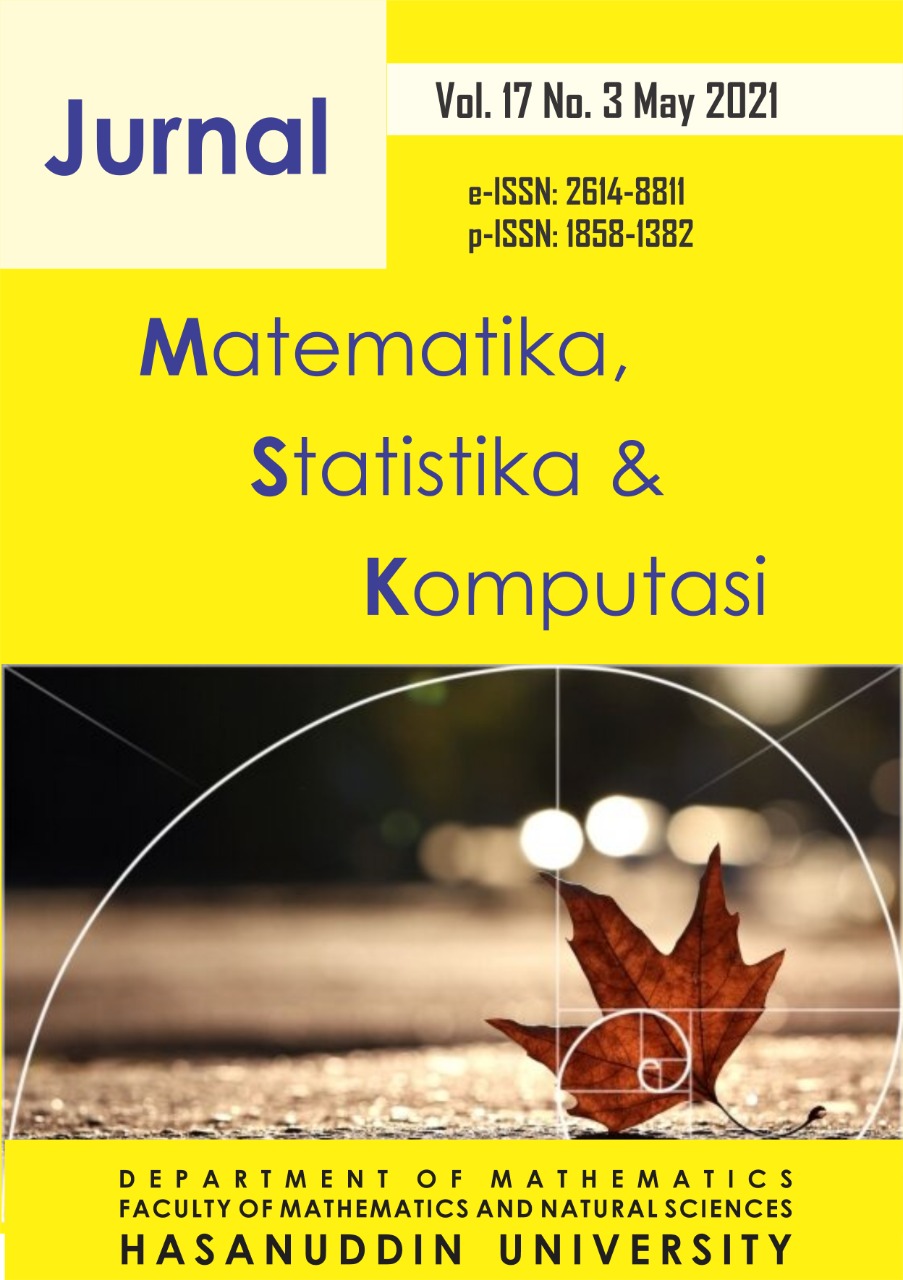Optimal Control of Mathematical Models on The Dynamics Spread of Drug Abuse
DOI:
https://doi.org/10.20956/j.v17i3.12467Keywords:
The Dynamics of Drug Abuse Spread, Mathematical Model, Pontryagin Minimum Principles, Forward-Backward Sweep Method, Optimal ControlAbstract
This article examines the optimal control of a mathematical model of the spread of drug abuse. This model consists of five population classes, namely susceptible to using drugs (S), light-grade drugs (A), heavy-grade drugs (H), medicated drugs (T), and Recovery from drugs (R). The system is solved using the Pontryagin minimum principle and numerically by the forward-backward sweep method. Numerical simulations of the optimal problem show that with the implementation of anti-drug campaigns and strengthening of self-psychology through counseling, the spread of drug abuse can be eradicated more quickly. The implementation of campaigns and strengthening of self-psychology through large amounts of counseling needs to be done from the beginning then the proportion can be reduced until a certain time does not need to be given anymore. The use of control in the form of strengthening efforts to self-psychology through counseling means that it needs to be done in a longer time to prevent the spread of drug abuse.Downloads
References
Ali S. J, Arifin N. M., Naji R. K., Ismail F. & Bachok N., 2016. Analysis of Ecological Model With Holling Type IV Functional Response. Int. J. Pure Apllied Math. Vol. 106, No. 1, 317–31
Andrews, J. F., 1968. A mathematical model for the continuous culture of microorganisms utilizing inhibitory substrates. Biotechnol. Bioeng. Vol. 10, No. 6, 707–723.
Beay L. K., Kasbawati & Toaha S., 2017. Effects of human and mosquito migrations on the dynamical behavior of the spread of malaria. AIP Conf. Proc. Vol. 1825, 20006
Collings, J. B., 1997. The effects of the functional response on the bifurcation behavior of a mite predator-prey interaction model. J. Math. Biol. Vol. 36, No. 2, 149–168
Haque, M., 2010. A predator-prey model with disease in the predator species only. Nonlinear Anal. Real World Appl. Vol. 11, No. 4, 2224–2236
Radziński, P. & Foryś, U., 2018. Ananysis of a predator-prey model with disease in the predator species Math. Appl. Vol. 46, No. 1, 137.
Saenz, R. A. & Hethcote, H. W., 2006. Competing species models with an infectious disease. Math. Biosci. Eng. Vol. 4, No.1, 219–235
Siddik A. M. A., Toaha S. & Kasbawati, 2017, Kestabilan Model Mangsa Pemangsa dengan Fungsi Respon Holling Tipe Iii Dan Penyakit Pada Pemangsa Super, Prosiding Seminar Nasional Matematika dan Aplikasinya, Surabaya Indonesia, Oktober 16-23.
Sokol, W. & Howell, J. A., 1981. Kinetics of phenol oxidation by washed cells Biotechnol. Bioeng. Vol. 23, No. 9, 2039–2049
Toaha, S. & Azis, M. I., 2018. Stability and Optimal Harvesting of Modified Leslie-Gower Predator-Prey Model. J. Phys. Conf. Ser. Vol. 979, No.1, 12069
Toaha, S. & Rustam, 2017. Optimal harvesting policy of predator-prey model with free fishing and reserve zones. AIP Conf. Proc. Vol. 1825, 1-9.
Toaha S, Kusuma J, Khaeruddin & Bahri M., 2014. Stability analysis and optimal harvesting policy of prey-predator model with stage structure for predator. Appl. Math. Sci. Vol. 8, No. 157-160, 7923–7934
Wiraningsih E. D., Agusto F., Aryati L., Lenhart S., Toaha S., Widodo & Govaerts W., 2015. Stability analysis of rabies model with vaccination effect and culling in dogs. Appl. Math. Sci. Vol. 9, No. 77-80, 3805–3817.
Downloads
Published
How to Cite
Issue
Section
License
Copyright (c) 2021 Author and publisher

This work is licensed under a Creative Commons Attribution 4.0 International License.

This work is licensed under a Creative Commons Attribution 4.0 International License.
Jurnal Matematika, Statistika dan Komputasi is an Open Access journal, all articles are distributed under the terms of the Creative Commons Attribution License, allowing third parties to copy and redistribute the material in any medium or format, transform, and build upon the material, provided the original work is properly cited and states its license. This license allows authors and readers to use all articles, data sets, graphics and appendices in data mining applications, search engines, web sites, blogs and other platforms by providing appropriate reference.








